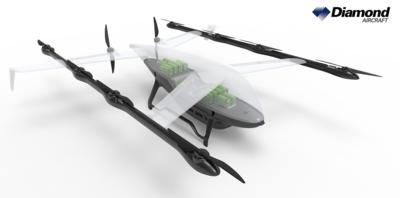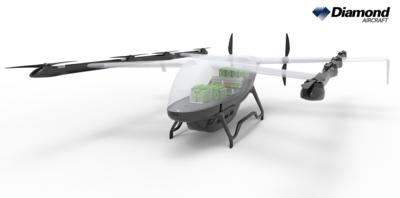Thu, May 01, 2025
Gaseous Hydrogen May Not Be As Cool as Liquid, But it’s Got Potential
Diamond Aircraft has announced a project hybrid aviation powertrains, entering into a “pathbreaking Austrian Research Promotion Agency funded project to advance gaseous hydrogen’s potential as a fuel source in General Aviation.”

The end result will be the ‘H2EDT’ (Hydrogen-based Twin-engine Electrification and Digitalization Testbed). The brand is excited about the possibilities of gas hydrogen tech, given its obvious environmental benefits. If used to its full potential, a hydrogen system produces no greenhouse gas emissions, while bottling up energy from other alternative and renewable forms of power generation. Diamond may seem a little behind the curve to keep working on gaseous hydrogen, given the current trend in the market, but they appear to feel pretty confident they can make the numbers hash out just fine. Gases are inevitably a lower-density form of energy compared to liquids, but the added complexity of maintaining hydrogen in liquid form in a lightweight GA aircraft may not be worth the trouble.
Diamond thinks they can tackle the energy issue by adding in a bank of electric batteries to help cover up the hydrogen system’s weaknesses. A full hydrogen gas powertrain would be “too heavy to cover peak power demands”, while adding additional problems thanks the volume needed for a full flight. Keeping that H2 gas nice and cold, in addition to crash-safe writes a whole lot of engineering checks a small GA airframe just can’t cash. The provision of energy dense batteries would help to cover the need for peak power during takeoff and climb, with fallback generation recharging them off the hydrogen system in cruise. Originally, Diamond planned to make a testbed using a typical twin-engine aircraft, much like their DA42. Ultimately, given the fervor surrounding Advanced Air Mobility, the firm decided to jump into the future with both feet, making it a VTOL with “up to 10 motors”.

If successful, Diamond says they just might do a follow-up hydrogen project on a full-size demonstrator using a DA40 or DA42. Having a standard aircraft in the pipeline would allow them to work out what kind of certification and design guidelines a full, follow-on hydrogen hybrid aircraft would have. But, all that lies on the other side of a finished H2EDT VTOL aircraft. So far, the brand has digitally mocked up a demonstrator using a half-scale CS-23 VTOL aircraft, so there’s plenty more to do.
More News
“While legendary World War II aircraft such as the Corsair and P-51 Mustang still were widely flown at the start of the Korean War in 1950, a new age of jets rapidly came to >[...]
Decision Altitude (DA) A specified altitude (mean sea level (MSL)) on an instrument approach procedure (ILS, GLS, vertically guided RNAV) at which the pilot must decide whether to >[...]
Aero Linx: National Aviation Safety Foundation (NASF) The National Aviation Safety Foundation is a support group whose objective is to enhance aviation safety through educational p>[...]
Also: Cal Poly Aviation Club, $$un Country, Arkansas Aviation Academy, Teamsters Local 2118 In response to two recent general aviation accidents that made national headlines, more >[...]
“The FAA is tasked with ensuring our skies are safe, and they do a great job at it, but there is something about the system that is holding up the medical process. Obviously,>[...]
 Aero-News: Quote of the Day (04.28.25)
Aero-News: Quote of the Day (04.28.25) ANN's Daily Aero-Term (04.28.25): Decision Altitude (DA)
ANN's Daily Aero-Term (04.28.25): Decision Altitude (DA) ANN's Daily Aero-Linx (04.28.25)
ANN's Daily Aero-Linx (04.28.25) Airborne-Flight Training 04.24.25: GA Refocused, Seminole/Epic, WestJet v TFWP
Airborne-Flight Training 04.24.25: GA Refocused, Seminole/Epic, WestJet v TFWP Aero-News: Quote of the Day (04.29.25)
Aero-News: Quote of the Day (04.29.25)




